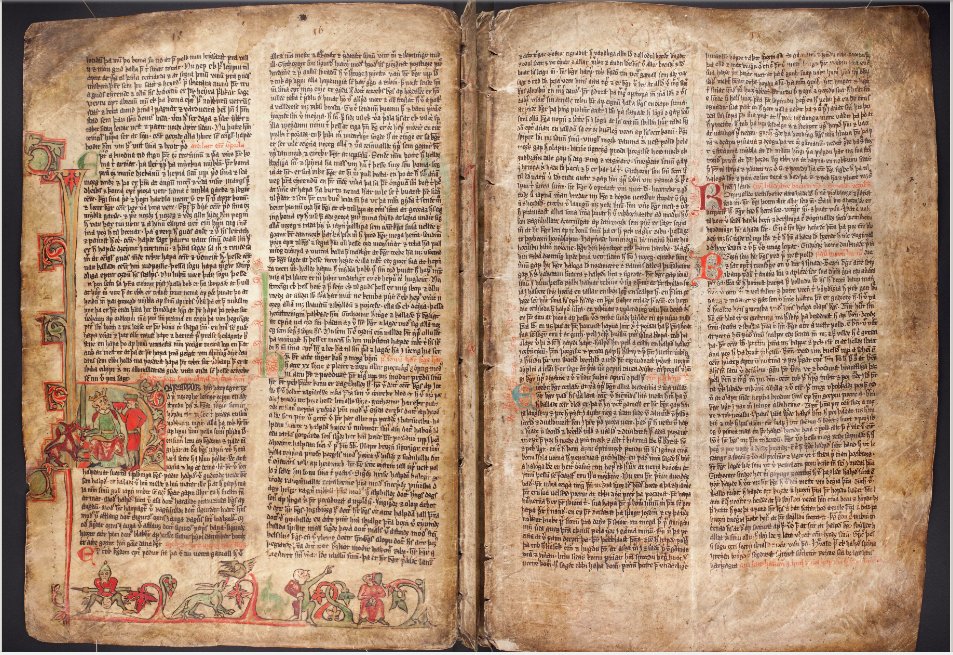Below is a brief summary by Maryann Pierse, who recently attended the Summer School in Scandinavian Manuscript Studies at the Árni Magnússon Institute in Reykjavík. Maryann’s visit was supported by SSNS through a Postgraduate/Early Career Research Grant, alongside Erin Benton, whose report may be found here.
From 6th to 15th August, I attended the Summer School in Scandinavian Manuscript Studies. The summer school provides palaeographical and codicological training specifically in Scandinavian manuscripts, this year hosted by the University of Iceland. The Scottish Society for Northern Studies’ Postgraduate Research Grant was an essential contribution to the cost of attending.
Having studied the codicology and palaeography of medieval English manuscripts, I was keen to learn how the Icelandic tradition differed. One of the biggest surprises—and challenges—was the sheer volume of abbreviations. Icelandic scribes appear to abbreviate at every possible turn, making reading their manuscripts feel like codebreaking. Other new skills I developed include transcribing in XMl. This mark-up language can be used to produce fully searchable editions of texts. We spent four sessions, split over two days, working on a ten-line excerpt of Njalssaga.
Many of our classes were hands-on workshops, in which we put our palaeographic and codicology skills into practice. Many of these classes were welcome revision of my Masters studies, but there were new titbits to glean here, too. In the paper class I learnt how to distinguish between the mould-side and felt-side of medieval and early modern paper (roughly equivalent to flesh-side and hair-side in parchment terms). In possibly the most practical of the classes, we were given feather quills, ink and as many scraps of vellum as we wanted. Then, the spirit of the scriptorium descended and all you could hear for forty-five minutes was the scratching of quills. I certainly came away with renewed respect for the medieval scribes—writing precisely with those quills was no easy feat.
The summer school was incredibly varied, covering everything from using dictionaries and catalogues, to a tour of the folklore department. Some classes were dedicated to working with early modern manuscripts. As so much of Old Norse material is only preserved in early modern copies of now-lost medieval manuscripts, learning how to read early modern scripts is essential. The excursion in the middle of the ten days also broadened our experience of Iceland beyond the classroom.
The summer school was intense and exhausting but incredibly stimulating, and I was sad when it ended. One of the highlights of the trip was meeting the other scholars on the course. I met people from across the world, studying linguistics, history, archaeology and more. Already, some of us are thinking of future projects to work on together, from seminar proposals to reading groups. I am very grateful to SSNS’s generous funding, which enabled me to participate in the summer school. I hope never to forget this rich experience and I look forward to all the new experiences and opportunities the summer school has opened for me.
- Maryann Pierse, 26 August 2024
(Header Photo: Reykjavík, Árni Magnússon Institute, GKS 1005 fols 5v-6r)

